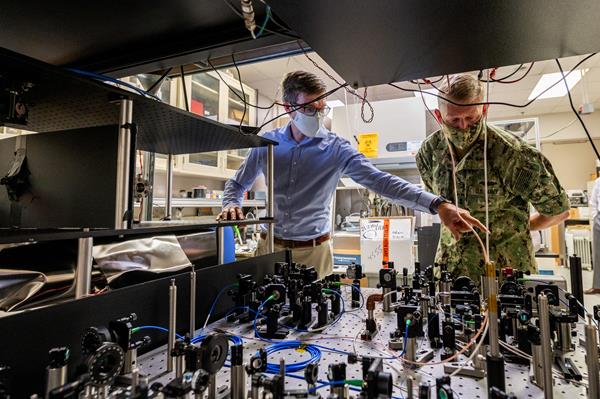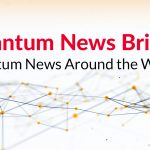DC-QNet puts the latest pin in the quantum networks map

The U.S. Naval Research Laboratory (NRL) said it started working with five other U.S. government agencies last month to establish the Washington Metropolitan Quantum Network Research Consortium (DC-QNet) to create, demonstrate and operate a quantum network as a regional testbed.
The move comes as more quantum network pilot projects and testbeds are emerging throughout the world. For example, the Chicago Quantum Exchange and its partners activated a quantum network in the Chicago area earlier this month. In terms of geography, many of these projects are metropolitan or regional in nature, no doubt to prove the capability of quantum communications to cover significant distances.
The project also is another demonstration of how aggressively government agencies have started to pursue quantum projects in the weeks since the White House issued memos urging government agencies to begin adopting quantum-safe security technology. (Separately, IQT News recently spoke with two private firms, each of which discussed projects with government agencies that have yet to be publicly announced.)
The agencies involved in DC-QNet include the U.S. Army Combat Capabilities Development Command Army Research Laboratory, the U.S. Naval Research Laboratory, the U.S. Naval Observatory, the National Institute of Standards and Technology, the National Security Agency, and the National Aeronautics and Space Administration, as well as the two out-of-region affiliates to this consortium: the U.S. Naval Information Warfare Center Pacific and the U.S. Air Force Research Laboratory, the latter of which has been an early mover in the world of quantum computing and related technologies.
“These agencies with world-class research capabilities will work to advance quantum network capabilities and leadership,” Gerald Borsuk, Ph.D., DC-QNet Executive Director said. “Quantum networks will be essential to modern secure communications and to computing enhancements in the 21st Century.”
An announcement of the DC-QNet testbed stated that it will perform entanglement distribution of qubits at multi-kilometer distances over a well-characterized and controlled quantum network.
Efforts include:
- Development of high fidelity quantum memory nodes, single-photon devices, network metrology, qubit platforms, transduction and frequency conversion, synchronization, and continued research and development into enabling science and technology
- Developing the network infrastructure to connect the six metropolitan agencies
- Research and development into the transfer of quantum entanglement between nodes
- Emulation, modeling and simulation of the network
- Research and development into the classical management and control, routing, monitoring and metrology and associated software of the quantum network.
DC-QNet researchers are also studying other quantum behaviors and capabilities such as transduction, or the process of converting qubits from one form into another. To fully harness these capabilities for quantum networking will require state-of-the-art measurement science, or metrology.
The DC-QNet governance comprises an Executive Director and an Executive Steering Committee, along with principal investigators from among the agencies taking the lead on the various technical goals. Among the programmatic goals of the consortium are:
- A trusted Quantum Network Testbed for the U.S. Government and the U.S. Department of Defense
- Contributions to network synchronization by official U.S. government timekeepers
- A focus on the metrology required to operate a quantum network
Dan O’Shea has covered telecommunications and related topics including semiconductors, sensors, retail systems, digital payments and quantum computing/technology for over 25 years.
Photo caption and credit: Jonathan Kwolek (left), a U.S. Naval Research Laboratory research physicist, shows an atom interferometer to Rear Adm. Lorin Selby (right), Office of Naval Research chief of naval research, at Washington, D.C., Sept. 14, 2020. Kwolek uses atom to measure motion with the intention of using it for navigation purposes (U.S. Navy photo by Jonathan Steffen, provided the U.S. Naval Research Laboratory).
























